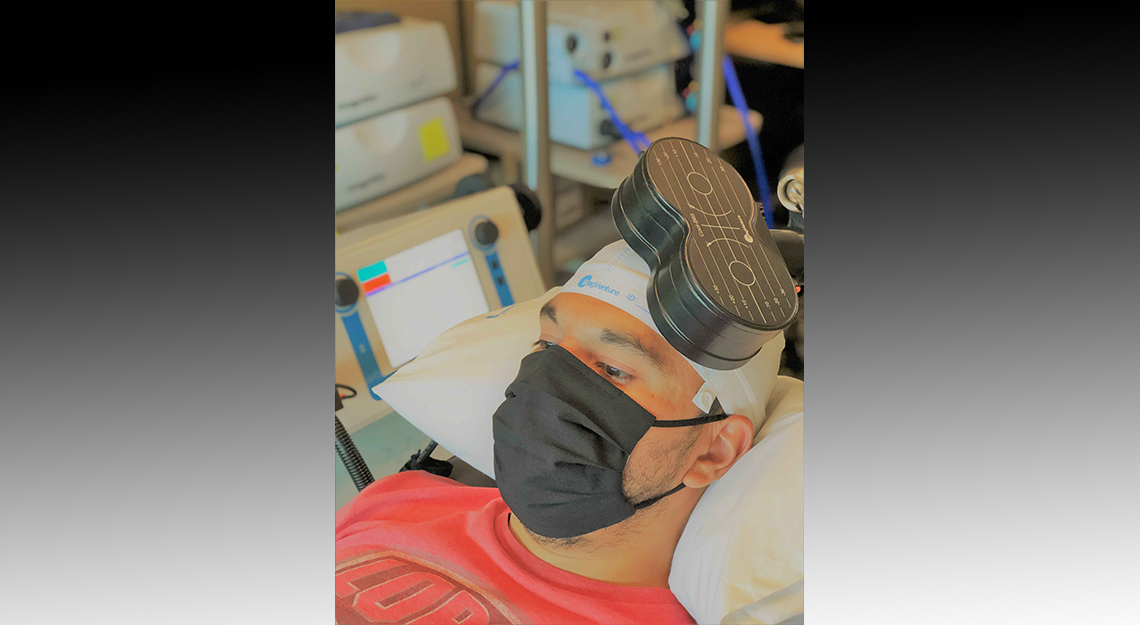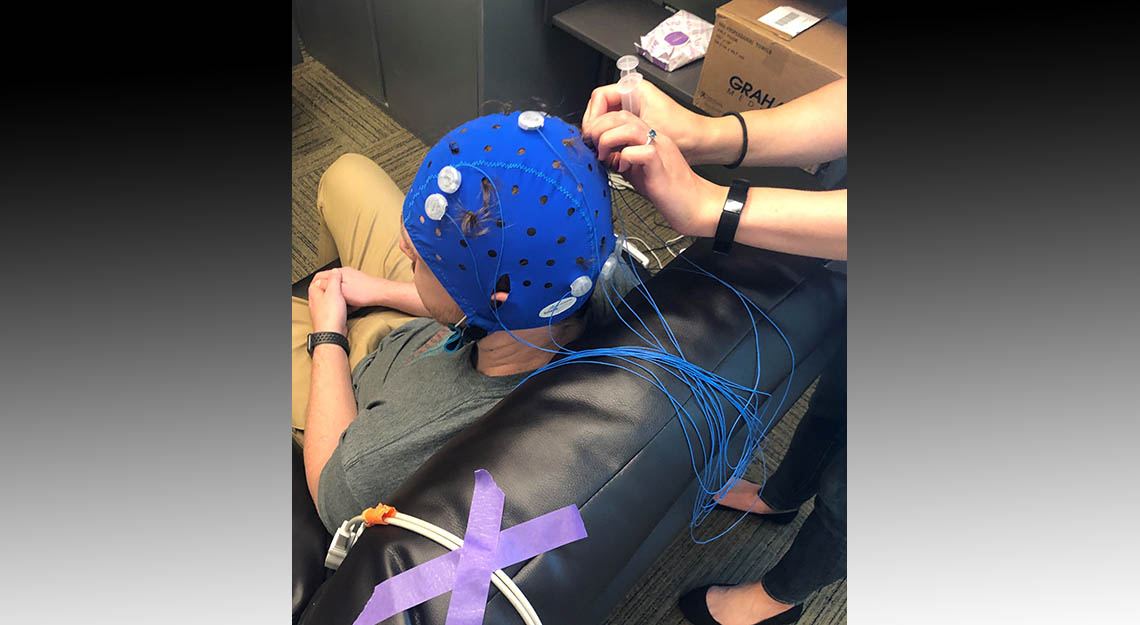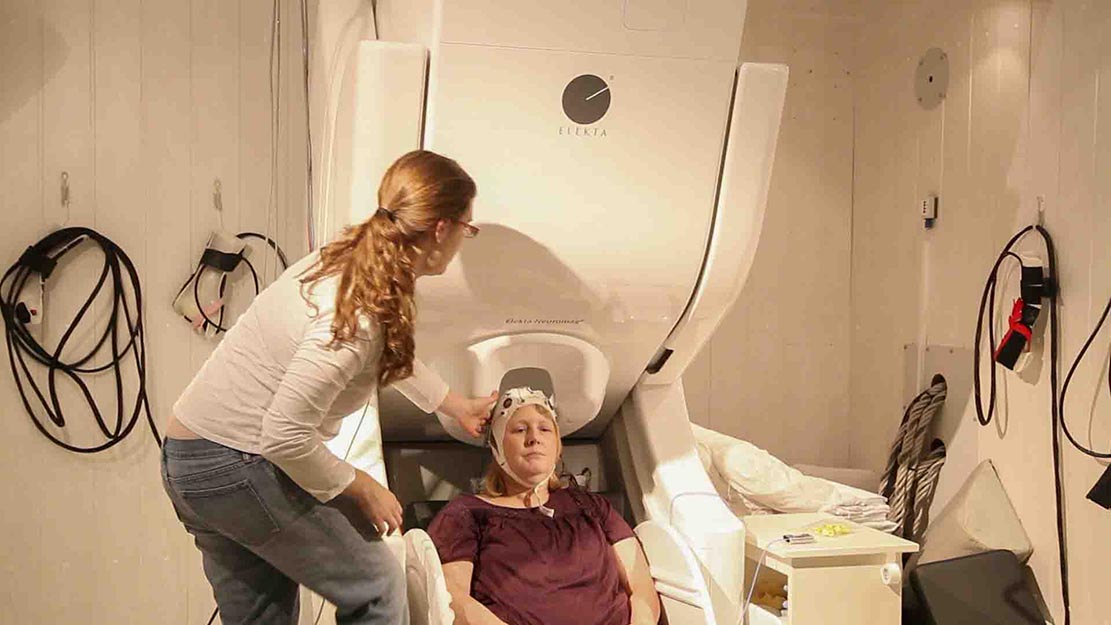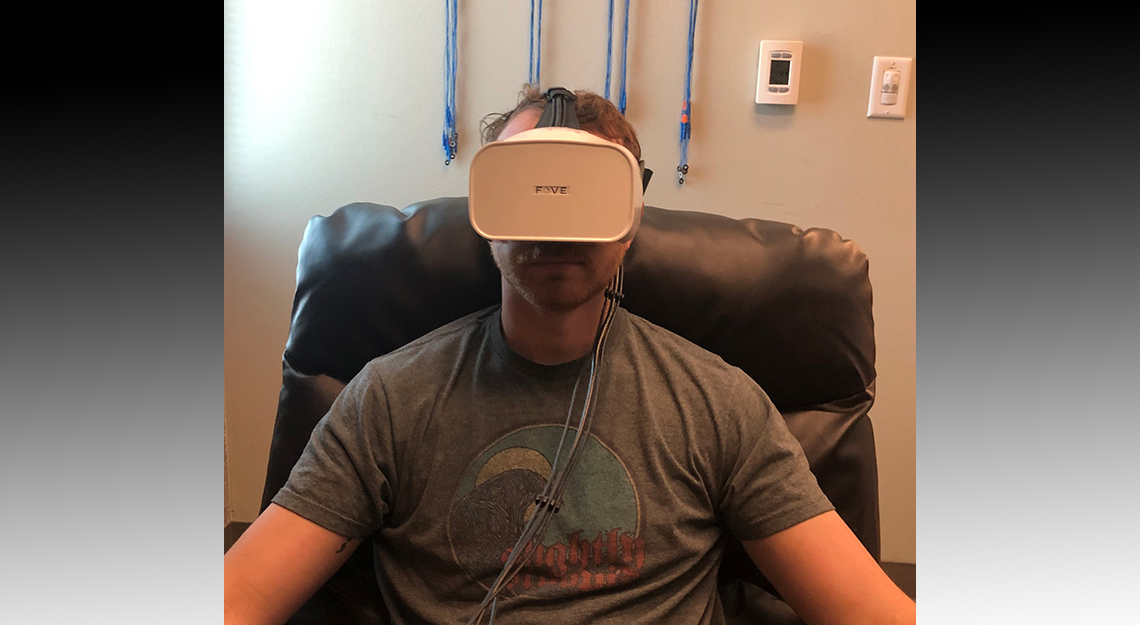We are committed to conducting high-quality research to advance understanding of behavioral health disorders and influence best clinical practices.

Headquartered in Domenici Hall on UNM North Campus, our teams have conducted high quality research on a wide range of disorders for more than 25 years. Our faculty all have specialized experience in various fields of psychiatry.
The Center’s purpose is to carry out studies that contribute to and enhance our understanding of mental illness. This includes research that may influence best clinical practices for the treatment of these disorders. Juan R. Bustillo, MD, leads the Center and is Director of Research.
Our research areas currently include psychotic disorders, electroconvulsive therapy (ECT), and psychiatric neuromodulation. Each has dedicated faculty members, research coordinators, and statisticians.
In addition to our Center, the Department also conducts community-based research through the Division of Community Behavioral Health (CBH)
The CONSCePT Lab serves as the headquarters for Department investigators conducting cutting-edge research at the interface of neuromodulation techniques and neuropsychiatric disorders. CONSCePT is focused on harnessing emerging computational modeling and multimodal imaging analysis techniques to personalize and optimize the delivery of electromagnetic energy to treat behavioral symptoms. Located on the first and second floors of Domenici Hall, the Lab includes offices, examination rooms, networked computers and servers, testing suites. Our core brain stimulation equipment is housed here as well.
At the heart of the CONSCePT Lab is a Magventure MagPro X100 Transcranial Magnetic Stimulator with MagOption, a state-of-the-art transcranial magnetic stimulation (TMS) system for advanced neuromodulation research applications.
The MagPro is able to perform the entire range of TMS functions, including single- and paired-pulse diagnostic studies, therapeutic repetitive excitatory (>5Hz) and inhibitory (1Hz) stimulation, and high-intensity theta-burst protocols, owing to an advanced liquid cooling system. It is configured with its own motor evoked potential (MEP) monitor, alleviating the need for separate neurophysiology equipment. It is equipped with a rodent-specific coil for preclinical studies, as well as a dual active-sham coil for double-blinded placebo-controlled trials.
The CONSCePT Lab also features a Localite system with a Polaris Spectra wide-angle infrared camera for real-time stereotactic neuronavigation of stimulation using co-registered imaging data. Located immediately adjacent to the imaging core of the Mind Research Network (MRN), the Magventure’s convenient location makes stimulation-imaging protocols straightforward.
Ongoing and completed studies:
Transcranial electrical stimulation delivered to the scalp leads to changes in brain activity, cortical excitability, and can alleviate clinical symptoms across a number of psychiatric and neurologic disorders.
The CONSCePT Lab owns and maintains two high-definition tDCS system (Soterix: MxN tES and Neuroelectrics Starstim 8). Which is its primary research device. These are CE-certified medical devices for conducting non-invasive transcranial direct current stimulation (tDCS), alternating (tACS), or random noise (tRNS) current stimulation with participants, and are capable of delivering stimulation through diverse montages for personalized and precise current steering.
These systems are equipped to deliver current through a variety of electrode shapes and sizes, with options for double-blind administration. The Lab also owns two FDA-approved Activa-Dose stimulators for clinical tDCS applications.
Ongoing and completed studies:
The CONSCePT Lab uses and maintains multiple basic and advanced tools for the identification and characterization of neurophysiologic dysfunction. These include computerized audiometry and auditory processing evaluation packages, visual acuity and near/far phoria measurement equipment, and vestibular and gait testing areas.
For functional convergence and divergence testing, the Lab owns a fully automated virtual-reality based platform using high-performance eye-tracking cameras embedded in a headset (Oculus DK) designed by the New Jersey Institute of Technology in cooperation with iSCAN. The Lab also has access to a Medtronic Bispectral Index monitor, as well as a Masimo Sedline and Root Monitor, capable of multimodal monitoring of vital signs, 4-channel electroencephalography, electromyography, density spectral array, and cerebral oximetry.
Ongoing and completed studies:
“Bispectral Index Monitoring and Density Spectral Array for the Detection of Delirium in Hospitalized Patients,” UNM Department of Psychiatry 2016 Rosenbaum Research Award Grant. PI: Quinn. 5/1/16-4/30/17. Purpose: To evaluate the utility of bedside bispectral index monitoring to assist clinical diagnosis of delirium in general hospital patients.
“High-Definition Transcranial Direct Current Stimulation for Sensory Deficits in Complex Traumatic Brain Injury.” W81XWH-17-1-0432, “Department of Defense, Congressionally Directed Medical Research Programs: Complex Traumatic Brain Injury Rehabilitation Research Award.” PI: Quinn. 11/1/2017-10/31/2021. Purpose: To characterize and ameliorate cognitive control deficits underlying multisensory postconcussive symptoms using magnetoencephalography and high-definition transcranial direct current stimulation in Veterans and Servicemembers with mild traumatic brain injury.
The CONSCePT Lab holds permanent workstation licenses for the Simpleware and Comsol software packages, powerful platforms for creating finite element (FE) models to predict the path of current in noninvasive brain stimulation.
Neuroimaging data obtained by MRI, including structural and functional sequences, is processed in a segmentation program to create “masks” or layers of different types of tissues (e.g. skin, cerebrospinal fluid, gray matter, etc.) Discontinuities and inaccuracies between the masks are resolved in Simpleware using Boolean operations, recursive Gaussian functions, and voxel filling, and a three-dimensional model featuring all the tissue layers is constructed.
Then, computer-assisted design (CAD) functions within Simpleware are used to introduce electrodes into the model at precise locations. In the last step, geometric meshes are imposed on the masks and electrodes to produce a finite element model that can be mathematically computed to solve for the electric current density in Comsol.
The CONSCePT Lab also has fully operational modeling pipelines utilizing freely available tools such as Freesurfer, Statistical Parametric Mapping (SPM), and SIMNIBS brain stimulation modeling program. Finally, the CONSCePT Lab also owns the commercially available software HD-Explore by Soterix Medical and has performed optimization and comparison studies between the different pipelines.
The UNM ECT Service assesses treatment responsive changes in brain structure and function. Funding sources have included NIMH, The Dana Foundation, COBRE, and the UNM CTSC. We use antidepressants, neuropsychological testing, and structural and functional magnetic resonance imaging before, during, and after the ECT treatment series.
The multidisciplinary research team includes physicians, neuroscientists, physicists, mathematicians, statisticians, computer scientists, and computer engineers. We collaborate with investigators from UCLA, Zucker Hillside (NY), UT-Southwestern, Georgia State University, Mind Research Network, and the National Institute of Mental Health.
The UNM ECT service is a member of the Global ECT MRI Collaboration (GEMRIC). GEMRIC focuses on mega-analyses of combined data (up to 2000 subjects) that will lead to new knowledge and discoveries for neuromodulation research in mood disorders.
This program focuses on schizophrenia and other psychotic disorders, such as Bipolar-I with psychotic features and schizoaffective disorder. Psychotic disorders are usually serious mental illnesses with a disturbance in assessing reality manifested by delusions, hallucinations, and/or disorganization of speech and behavior.
Two to three percent of people will experience these disorders during their lifetime. A larger proportion of people will experience occasional psychotic symptoms, without any serious consequences for their well-being. Research shows that early detection/treatment can lead to better outcomes. Consistent with the importance of early detection and treatment of these disorders, our current efforts involve the study of younger people who are starting to experience psychotic symptoms.
Juan Bustillo, MD, focuses on adult mental health, and Rhoshel Lenroot, MD, is a Child and Adolescent Psychiatrist. They lead the program and are both full-time tenured professors in the Department. Current sources of support include federal funding (NIH) through two programs: COBRE pilot grants from the Mind Research Network and CTSC pilot grants from the UNM Health Science Center.
Our three active studies all use brain imaging modalities to understand the mechanisms underlying psychotic disorders:
“Defining the brain network underlying psychotic symptoms in early schizophrenia and bipolar disorder.” Method: Use magnetic resonance imaging to examine the structure, connectivity, and chemistry of the brain in these illnesses.
“A magneto-encephalography study of perceived body ownership in youth with schizophrenia spectrum disorders." Method: Use magneto-encephalography and magnetic resonance imaging in persons just starting to experience psychotic symptoms (ie: Clinical High-Risk for Psychosis) or in young persons with schizophrenia.






Center for Psychiatric Research
Psychiatry and Behavioral Sciences
1101 Yale Blvd NE
1 University of New Mexico
MSC09-5030
Albuquerque, NM, 87131